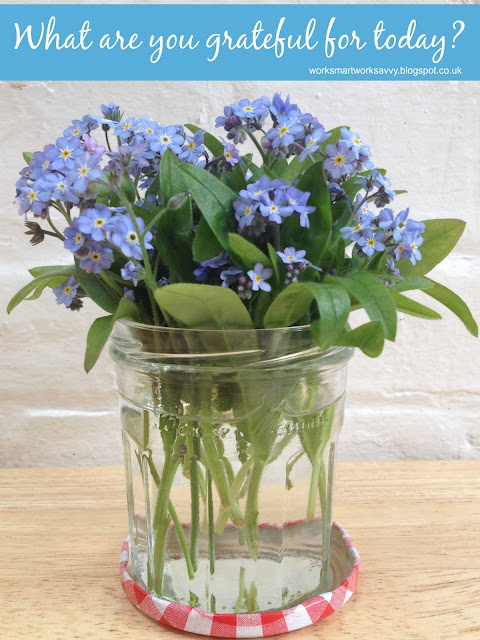 |
| This is my workspace. It isn't big or flash but it has natural light and a noticeboard full of pretty things which suits me down to the ground. |
My husband, a software developer who normally works inside, always had a dream to have the opportunity to work outside. Others would pooh-pooh the idea saying it's too hard, too uncomfortable, you can't seen the screen and you can't get a good internet connection. He does it, depending on the work he's doing and it works fine. He's fortunate enough to have a large garden at his place of work where he can indulge in this outdoor dream and likewise on the days he works from home, if the sun's out and it's warm enough, he'll take his laptop into our garden. He always says that he feels a million times better for it and that has to be a good thing.
In my previous place we moved into an old Victorian building. I love old, I live in an old Victorian house and embrace the drafts, uneven floors and other quirks but this place just wasn't right for the work we were doing in adult mental health. It felt institutionalised, the magnolia décor was was bland and uninspiring, it was either too hot or too cold and the meeting rooms were like cells and the offices were soul less. Meeting with people who were feeling very low, anxious and lacking in self esteem in these windowless uninspiring boxes was in fact was rather depressing for both the client and the employee. Unfortunately, I saw the negative impact this unstimulating environment had on myself, my colleagues and clients.
The workplace environment needs to be in harmony with the purpose it's being used for.
Director of strategy and business transformation, Helen Nicol, at creative consultancy SoVibrant echoes this,
“Open plan used to be all the rage, but this often had absolutely no bearing on what employees did, so people hated it,” she explains. “Making the working environment somewhere that supports what employees need to do, and makes them feel cared for, will make them happier and more productive.”
Natural light is one of my must haves when it comes to working and my desk (pictured above) is positioned by both a window and a skylight. Without any natural light I feel the day has no shape.
The Global Impact of Biophilic Design in the Workplace, published in March 2015, (carried out by Interface and Robertson Cooper) found that incorporating natural elements into office design increased workers' well-being by 15%, productivity by 6% and creativity by 15%.
Final words on the subject goes to Geoff Dutaillis, group head of sustainability at Lend Lease,
“Whatever business you are in, you are in the business of people. How a building ‘works for people’ should be the priority question.”
Here is the Friday Download article round up on the subject of the impact the workplace can have on motivation, engagement well-being and productivity...
I've written about this topic before in my Workplace Most Wanted post.
The office that combats mental and physical stress.
Can the workplace motivate staff?
Could an office dog help your staff relax?


































